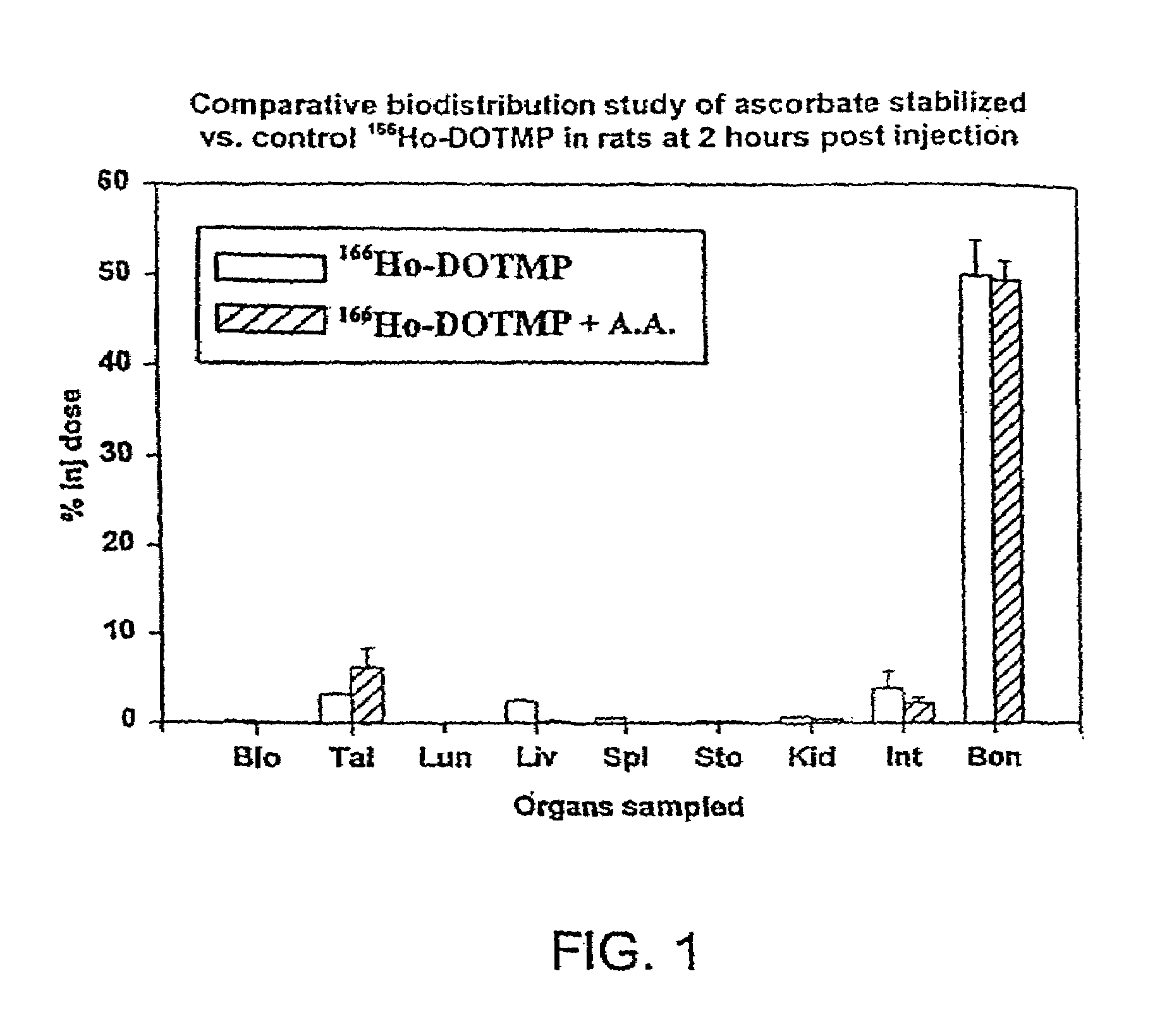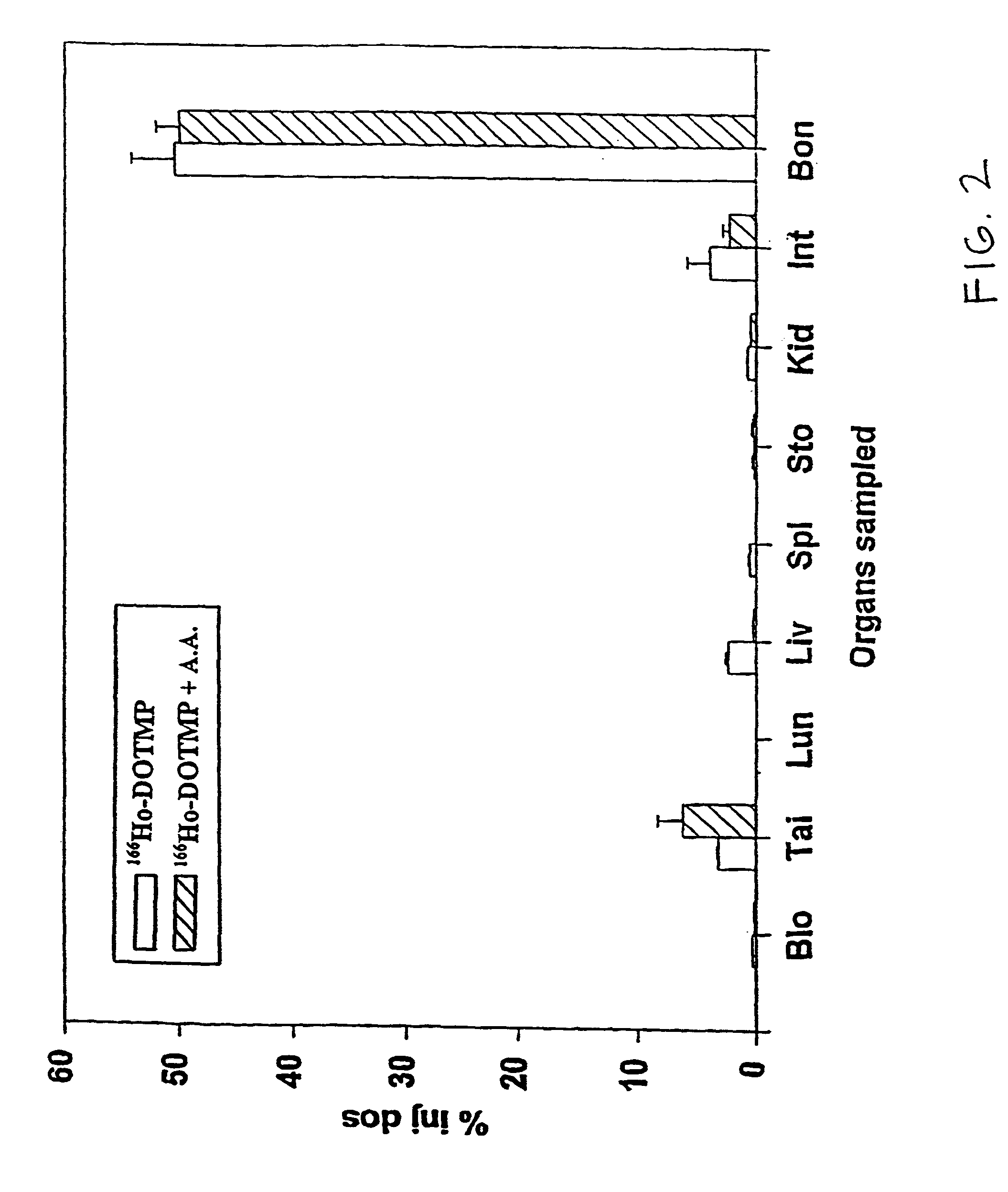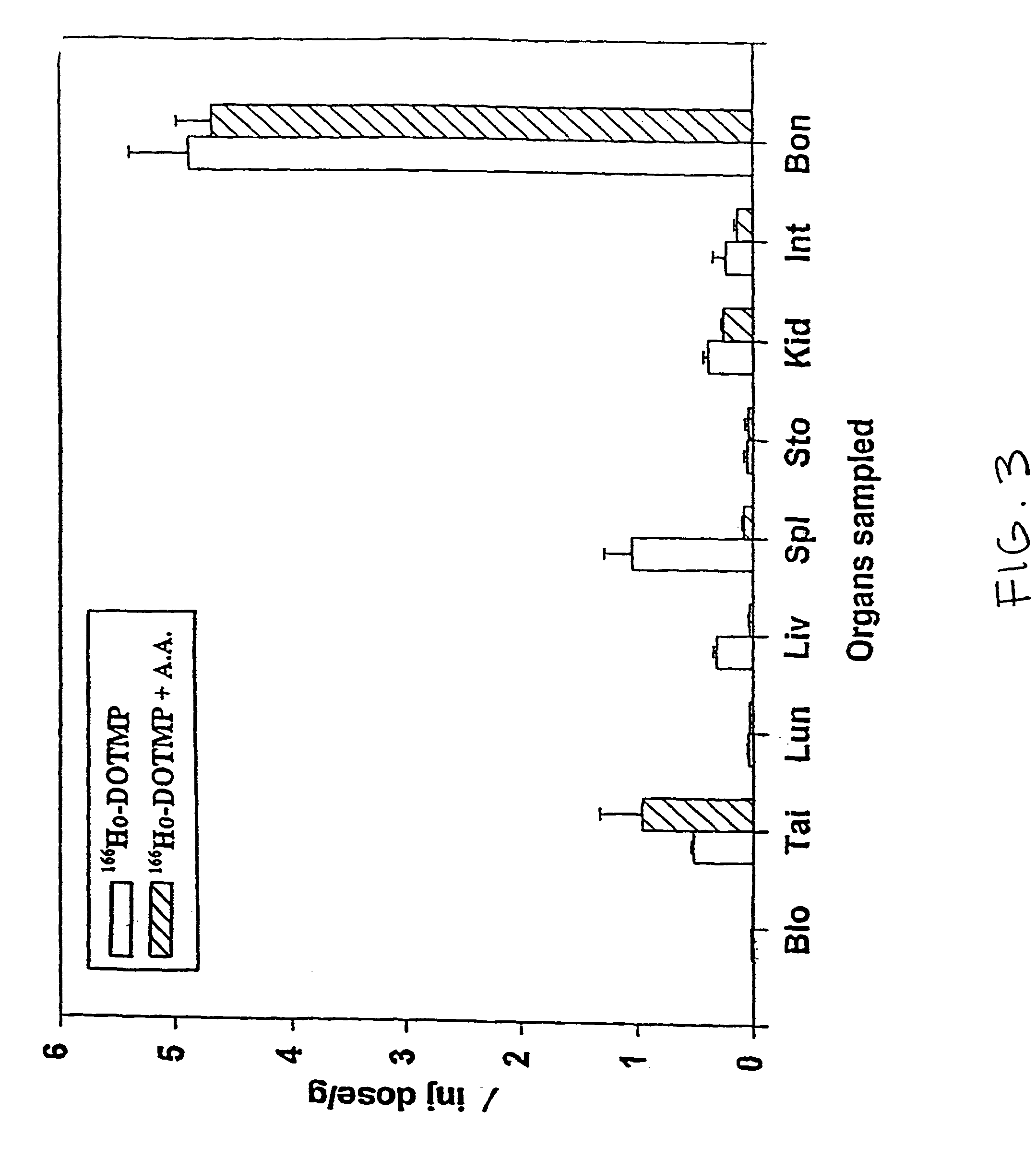Skeletal-targeted radiation to treat bone-associated pathologies
a technology of bone-associated pathologies and targeted radiation, which is applied in the direction of drug compositions, group 3/13 element organic compounds, therapy, etc., can solve the problems of pathologic fractures, the inability to treat patients with severe and sometimes irreversible myelosuppression, so as to inhibit the radiolytic degradation of the complex, maintain the stability of the radionuclide complex, and reduce the amount of free radionucli
- Summary
- Abstract
- Description
- Claims
- Application Information
AI Technical Summary
Benefits of technology
Problems solved by technology
Method used
Image
Examples
example 1
166Ho-DOTMP Preparation
[0171]Ho-165-nitrate targets are prepared from dissolution of holmium oxide in nitric acid followed by reduction to dryness. A target containing 6 mg of holmium is irradiated in a reactor for approximately 155 hours at a flux of 4.5×1014 n / cm2 / s. The specific activity is typically in the range of 1.3–2 Ci / mg.
[0172]The 166Ho-nitrate target is dissolved in 0.3 N HCl. In a typical 9 Ci preparation, 166Ho-chloride is supplied in 10 ml of 0.3 N HCl. Six vials of DOTMP (each vial containing 10 mg DOTMP and 28 mg NaOH) is dissolved in 4 ml water and added to the 166Ho chloride. The ligand to metal ratio is 3.5. The reaction mixture is allowed to mix for 10 minutes at a pH of 10.5. This is followed by addition of 4.8 ml of 1.0 M sodium phosphate buffer and ascorbic acid. The final concentration of ascorbic acid is 55 mg / ml. Dilution with water may be performed to assure that the final activity concentration does not exceed 322 mCi / ml. The pH of the final product is 7–...
example 2
Preparation of 153Sm Solution
[0173]Sm-153 is produced by irradiating 99.06 percent enriched 152Sm2O3 in the first row reflector at a neutron flux of 8×1013 neutron / cm2×sec, or at high flux of 4.5×1014 n / cm2 / sec, at the Missouri University Research Reactor (MURR). Irradiations are generally carried out for 50 to 60 hours, yielding a Sm-153 specific activity of 1000–1300 Ci / g.
[0174]To irradiate Sm2O3 for production of Sm-153, the desired amount of target is first weighed into a quartz vial, the vial flame sealed under vacuum and welded into an aluminum can. The can is irradiated for the desired length of time, cooled for several hours and opened remotely in a hot cell. The quartz vial is removed and transferred to a glove box, opened into a glass vial that is then sealed. An appropriate amount of a solution of hydrochloric acid is then added to the vial via syringe in order to dissolve the Sm2O3. Once the Sm2O3 is dissolved, the samarium solution is diluted to the appropriate volume b...
example 3
Preparation of 159Gd Solution
[0175]Gadolinium-159 is prepared by sealing gadolinium oxide (1.1 mg) into a quartz vial. The vial is welded inside an aluminum can and irradiated for 30 hours in a reactor at a neutron flux of 8×1013 neutron / cm2×sec. The contents of the quartz vial are dissolved using HCl. Water is added to obtain a solution of Gd-159 in 0.1N HCl.
PUM
| Property | Measurement | Unit |
|---|---|---|
| concentration | aaaaa | aaaaa |
| time | aaaaa | aaaaa |
| beta energy | aaaaa | aaaaa |
Abstract
Description
Claims
Application Information
 Login to View More
Login to View More - R&D
- Intellectual Property
- Life Sciences
- Materials
- Tech Scout
- Unparalleled Data Quality
- Higher Quality Content
- 60% Fewer Hallucinations
Browse by: Latest US Patents, China's latest patents, Technical Efficacy Thesaurus, Application Domain, Technology Topic, Popular Technical Reports.
© 2025 PatSnap. All rights reserved.Legal|Privacy policy|Modern Slavery Act Transparency Statement|Sitemap|About US| Contact US: help@patsnap.com



